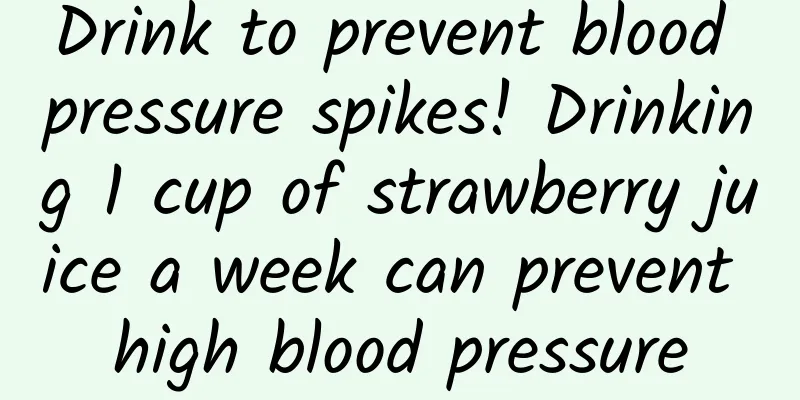Exercise is good medicine! Innovative vertical and horizontal movements to keep away from disease threats

|
To live you have to move! Exercise is good medicine! A large amount of reliable scientific evidence shows that the therapeutic effect of exercise on chronic metabolic diseases is associated with a decrease in the overall mortality rate among middle-aged and older people. According to a recent study by the World Health Organization (WHO), nearly 80% of adults worldwide lead a sedentary life and lack exercise. These people have a much higher risk of developing cardiovascular disease, diabetes, dementia and cancer, and even higher mortality rates than those who exercise regularly. Studies have shown that people who regularly perform aerobic exercise training have lower levels of arterial stiffness, and even just a single aerobic exercise session can significantly improve arterial compliance and reduce arterial stiffness. Lack of exercise, along with smoking, drinking and unhealthy diet, are the root causes of all diseases and are known as the "four major non-communicable diseases". Currently, non-communicable diseases kill 41 million lives worldwide each year, accounting for about 71% of the world's deaths. According to statistics, office workers are the laziest to move, with as many as 70% to 80% having no exercise habits. Exercise is the best preventive medicine The prevalence of metabolic syndrome is increasing day by day and has become a factor in declining health. Exercise can keep blood sugar stable for 48 hours. For people with type 2 diabetes, regular exercise can increase the amount of insulin signaling proteins, thereby improving insulin sensitivity. The longer the exercise time and the greater the intensity, the better the effect of improving insulin sensitivity. "Exercise + 5% weight loss" has been shown to prevent or delay type 2 diabetes. Low-intensity aerobic exercise can effectively lower blood pressure for patients with mild and moderate hypertension, with systolic blood pressure dropping by about 8 to 10 mmHg and diastolic blood pressure dropping by about 7 to 8 mmHg. Moderate-intensity exercise for 12 weeks can reduce low-density lipoprotein cholesterol (LDL) by 17%, while moderate-intensity exercise for 12 to 24 weeks can help increase high-density lipoprotein cholesterol (HDL). Studies have shown that people who regularly perform aerobic exercise training have lower levels of arterial stiffness, and even just a single aerobic exercise session can significantly improve arterial compliance and reduce arterial stiffness. Therefore, accumulate 150 minutes of moderate physical activity per week, such as brisk walking, slow walking, and cycling, to develop good heart-protecting habits. Regular exercise can be simple Many people know that exercise is good for the body, but knowing this does not necessarily mean they can do it. Movement can be divided into active movement and passive movement: Active Movement: Active fitness exercise prescriptions mainly focus on aerobic exercise and muscle strength training. They focus on one's own body and use it to drive limb movements to complete autonomous movements. Active exercise can be performed with your bare hands or with the assistance of equipment. However, because it relies on the body's "strength" to achieve this, a person's physical fitness, age, health status (such as joint load-bearing capacity), etc. must all be at a certain level. When a person is exercising vigorously, the blood flow to the muscles can increase from 0.75 liters per minute in a static state to 20 liters per minute or even more. Although this helps blood circulation and metabolism in the body, at the same time, the amount of exercise metabolites increases, and the liver, kidneys and urinary system need to be relied upon for detoxification, which may become a burden for people with related chronic diseases. Passive exercise: There are relatively few physical limitations, mainly because passive exercise is assisted by "external force". It is mainly used to relax muscles and fascia, promote lymph and blood circulation, and adjust the alignment and arrangement of body structure. It mostly improves the body in a relaxed and effortless situation, so it is often used in "rehabilitation", including joint movements and soft tissue massage. With the advancement of new technology, a new type of passive exercise has also emerged - rhythmic exercise. Rhythmic exercise is assisted by machines and can be divided into vertical rhythmic exercise and horizontal rhythmic exercise: 1. Vertical rhythm: It will generate acceleration force in the human body, thereby inducing subsequent physiological adaptation, which will have a positive impact on promoting health. According to relevant literature and data, it has the benefits of disease prevention and anti-aging, such as: staying away from sarcopenia, losing weight, strengthening bone density, improving immunity, regulating blood sugar, and alleviating discomfort during menstruation or menopause. 2. Horizontal rhythm: Horizontal rhythm is a type of rhythm that requires the assistance of equipment. Usually you need to lie on an assistive device and receive regular vibrations from head to feet, horizontally, back and forth, which is the so-called "whole body periodic acceleration (WBPA)". This process can accelerate the blood in the body and produce pulse force on the blood vessels. When blood flow increases, blood shear force will increase synchronously, which will stimulate vascular endothelial cells and enhance endothelial function, thereby maintaining vascular elasticity, regulating blood pressure, clearing blood vessels, and keeping blood vessels unobstructed. At the same time, the endothelial cells of the blood vessels can secrete "anti-inflammatory" substances to extinguish the inflammatory response in time: endothelial cells also have the function of new blood vessels, which helps to increase the number and density of blood vessels in the tissue. Horizontal rhythm can also increase nitric oxide levels and make blood vessels younger! However, it should be noted that horizontal movements cannot be considered sports training. This is because during horizontal rhythm, the muscles of the whole body are in a relaxed state (just like a baby), without any muscle contraction, no physical activity, and low calorie consumption. Therefore, it does not meet the traditional sports science definition of physical activity, nor does it have the benefits of active exercise to improve cardiopulmonary endurance and muscular fitness. Dr. Chen Junzhong published the book "Exercise is Easier Than You Think". Group photo from left: Hong Qingzhong, Chen Yihong, Lin Qinggu, Jian Wenren, Song Yanren, Chen Zijin, Chen Junzhong, Zhou Hongshi, Huang Qizhang, Zhang Caiming, Chen Yuzhu, Wang Mingyong. (Photo provided by City Publishing) Avoid the counter-effect of incorrect rhythm patterns In order to achieve safe and effective health promotion, the vibration direction, intensity and duration of passive vertical vibration tools must be very particular. First of all, the direction of vibration must be vertical up and down in order to generate the ground reaction force that counteracts the thrust of gravity and the downward impact of gravity. If the machine you purchase uses pivot (see-saw) vibration for its internal operation, it can easily cause the body's center of gravity to swing left and right, and concentrate force on the lower limb (hip, knee, ankle) joints and waist, which may cause uneven force on local tissues, fatigue, and even sports injuries. Secondly, the force of vibration must be properly controlled to avoid adverse effects after use. In addition, vertical vibration drives the human body in motion with a sine wave, gently stimulating every part of the body, and when standing, it can be transmitted through the spine to the upper body and head. However, the longer the vibration lasts, the greater the vibration force accumulated in the body. Therefore, it is usually recommended to use it for 15 minutes each time, and then adjust the frequency and duration based on the individual's response to the rhythmic stimulation. Vertical and horizontal movements make exercise simple With the progress of the times, the epidemic and changes in lifestyle, the rise of home exercise has made home exercise a new trend. The new sports furniture has gotten rid of the shortcomings of traditional indoor sports equipment and the limitations on its users. Dr. Chen Junzhong, a doctor of sports medicine, has a deep understanding of his more than 30 years of work experience in the field of sports medicine. Promoting exercise should not only emphasize the benefits of sports participation, but more importantly, "how to reduce the barriers to sports participation?" In particular, the professor's daughter was hospitalized due to cerebral hemorrhage and went through a long road of rehabilitation. For safety reasons, she needs to exercise at home. Dr. Chen Junzhong published the book "Exercise is Easier Than You Think" to introduce an innovative passive exercise model to those who want to exercise but lack the strength, or those who do not like activities: vertical rhythm and horizontal rhythm. This takes into account accessibility, convenience and safety, and breaks through the limitations of age, physical condition, external weather, environment, etc. The book also demonstrates 21 symptomatic rhythmic exercises, hoping that people who lack exercise can also make good use of technology to help them maintain a habit of fitness exercises for just 15 minutes a day, thereby solving the vicious cycle of health deterioration caused by lack of exercise and limited physical activity, integrating exercise into daily life and making exercise a kind of enjoyment. |
Recommend
Women should pay attention to the causes of acute adnexitis
Adnexitis is a common gynecological disease. Clin...
Can chronic pelvic inflammatory disease cause infertility?
Can chronic pelvic inflammatory disease cause inf...
What should I do if I have pelvic inflammatory disease and cannot live without anti-inflammatory drugs every month?
What should I do if I have pelvic inflammatory di...
Physical examination of women is the main method for diagnosing vulvar leukoplakia
The diagnosis of female vulvar leukoplakia is of ...
Paying attention to sexual hygiene can prevent cervical erosion
Cervical erosion is a common chronic gynecologica...
What are the prevention methods for cervical hypertrophy?
For women, cervical hypertrophy is a common disea...
Visceral fat can cause you to have diabetes and fatty liver! Can drinking enoki mushroom tea eliminate it? Chinese medicine hawthorn and poria weight loss stick
Are you a "belly worrier" with excess v...
What are the symptoms of severe cervicitis?
Cervicitis is one of the common diseases among wo...
How to effectively relieve the condition of patients with dysmenorrhea
Dysmenorrhea is a common phenomenon in women. It ...
Eat light tofu and lettuce salad to protect your body
A light summer feast, the lettuce salad in conven...
The main manifestations of the harmful effects of cervicitis
Among the many gynecological diseases, the high i...
It’s more effective to lose weight in autumn! Learn the Japanese and Korean black bean weight loss method
As the temperature turns cooler in autumn, it’s t...
When will uterine fibroids be removed? When will uterine fibroids be removed?
Under what circumstances will uterine fibroids be...
Do you know the cause of uterine fibroids?
Uterine fibroids are a very harmful gynecological...
Why do women suffer from repeated cervical erosion? 7 reasons for repeated cervical erosion
The recurrence of cervical erosion has caused ser...









